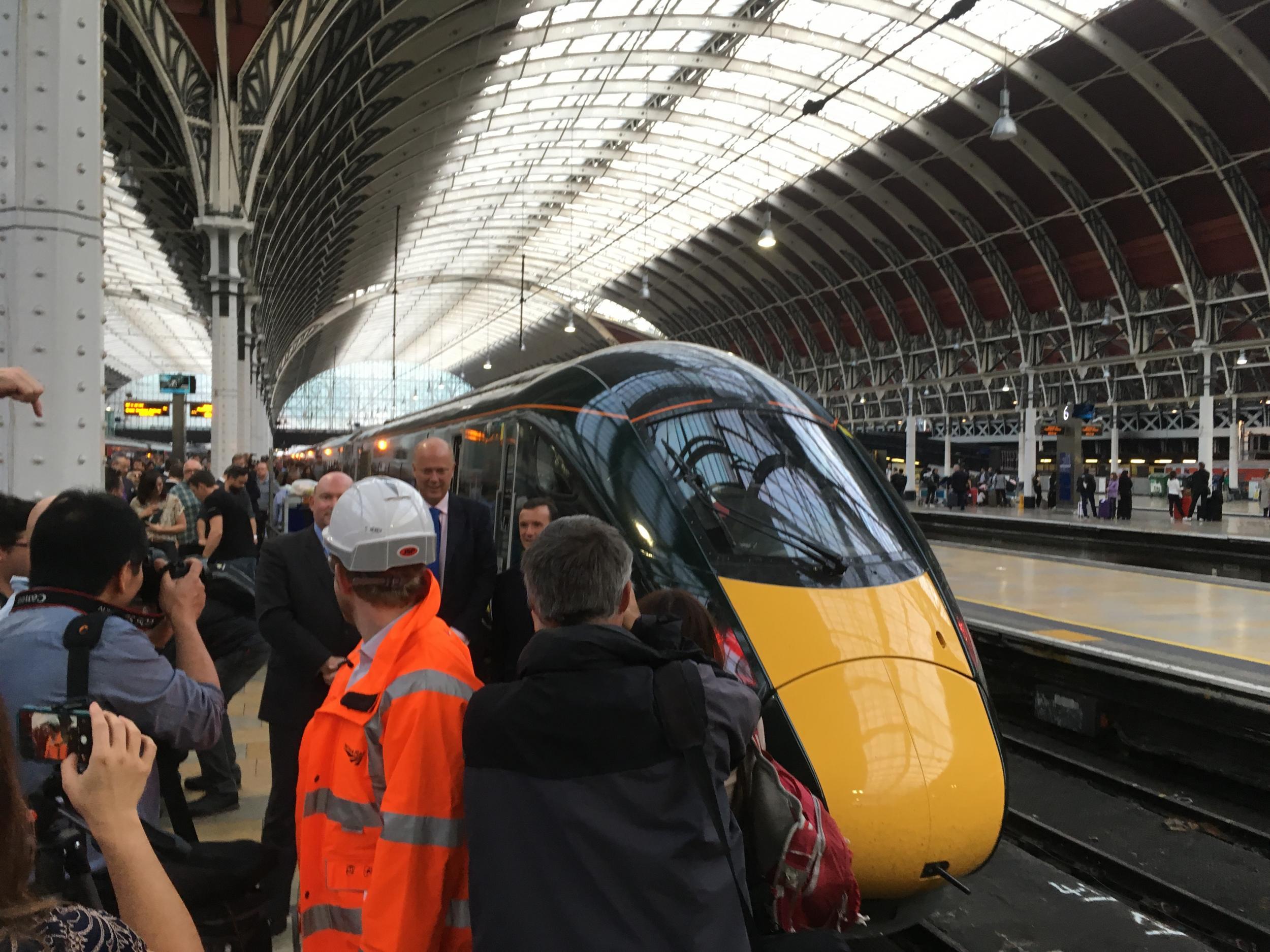Intercity Express launch hails the new age of the train
Transport Secretary: 'This is going to transform Intercity rail travel in the UK - not just here on the Great Western line, but on the East Coast main line'

Your support helps us to tell the story
From reproductive rights to climate change to Big Tech, The Independent is on the ground when the story is developing. Whether it's investigating the financials of Elon Musk's pro-Trump PAC or producing our latest documentary, 'The A Word', which shines a light on the American women fighting for reproductive rights, we know how important it is to parse out the facts from the messaging.
At such a critical moment in US history, we need reporters on the ground. Your donation allows us to keep sending journalists to speak to both sides of the story.
The Independent is trusted by Americans across the entire political spectrum. And unlike many other quality news outlets, we choose not to lock Americans out of our reporting and analysis with paywalls. We believe quality journalism should be available to everyone, paid for by those who can afford it.
Your support makes all the difference.Despite the delays and cancellations that afflicted the first departures of the new Intercity Express Train, passengers, politicians and transport executives have welcomed the replacement for rolling stock that is four decades old.
On platform 10 at Reading station, waiting for the delayed train from Bristol to London Paddington, passenger Mike Bingham said: “It’s an important day. Going back 40-odd years to when they introduced the High Speed Trains, think how well they have last. If these can last half as well then that’ll be a great thing.”
Chris Grayling, the Transport Secretary, travelled on the first service from Bristol Temple Meads.
At London Paddington station, he told The Independent: “I think the train’s fantastic. A few teething problems but the reality is that this is going to transform Intercity rail travel in the UK - not just here on the Great Western line, but on the East Coast main line and the trans-Pennine route.
“What passengers really care about is having a smart, new train, high-quality wi-fi, lots of seats. This is the future of inter-city railways.”
In a £5.7bn contract, a total of 866 carriages are being made: 369 for the Great Western line and 497 for East Coast main line.
GWR, the first operator, says: “Whether they’re running on electric or diesel, state-of-the-art engineering means emissions and noise pollution are always kept to a minimum.”
The new rolling stock offers much faster acceleration than the current trains, as well as increased passenger comfort - with a mains socket at every seat - and capacity.
In the morning peak, the number of seats into Paddington will increase by 40 per cent.
Alun Cairns, Secretary of State for Wales, met the train at Paddington. He said: “So often the peak trains coming out of Paddington are jam-packed travelling all the way to Swansea. This will mean greater capacity and comfort, and it’s the first tangible benefit for passengers of a billion-pound investment in the railway.”
Network Rail’s Chief Executive, Mark Carne, said: “This is actually just one of the transformations of the network that people are going to see over the next 18 months.
“Great Western trains will have twice the number of services running from Bristol, 15 minutes faster journey times when these trains are running at full tilt, and then we have Crossrail, we have Thameslink, we’ve got Edinburgh-Glasgow electrification.
“All of these projects and 6,000 new trains are coming in the next 18 months to two years.”
Join our commenting forum
Join thought-provoking conversations, follow other Independent readers and see their replies
Comments